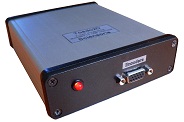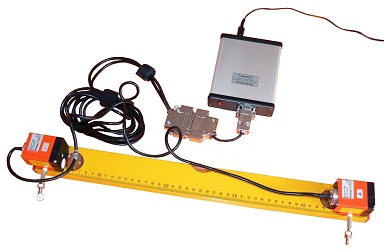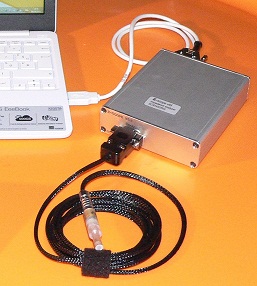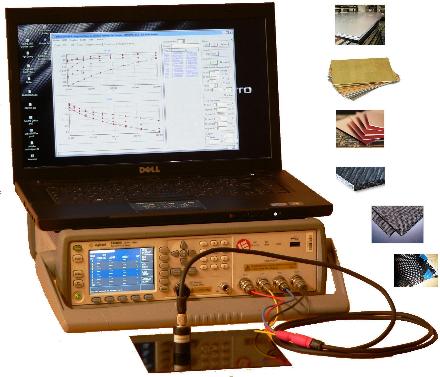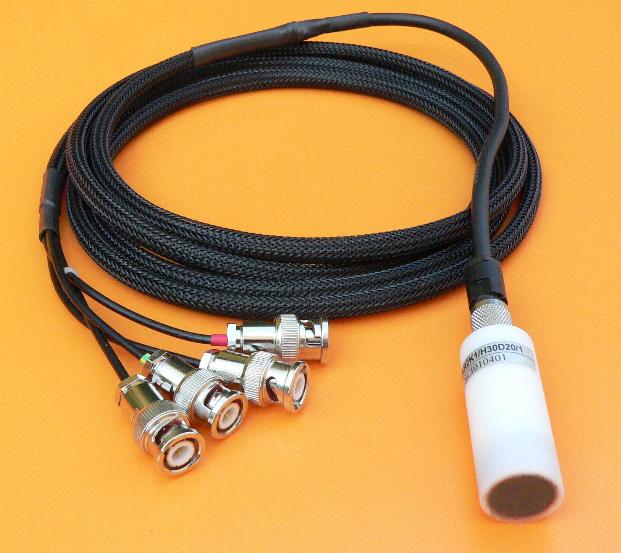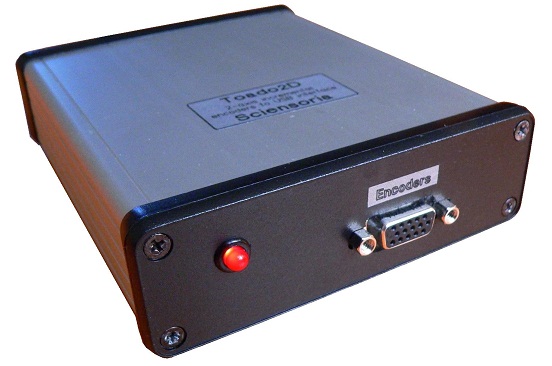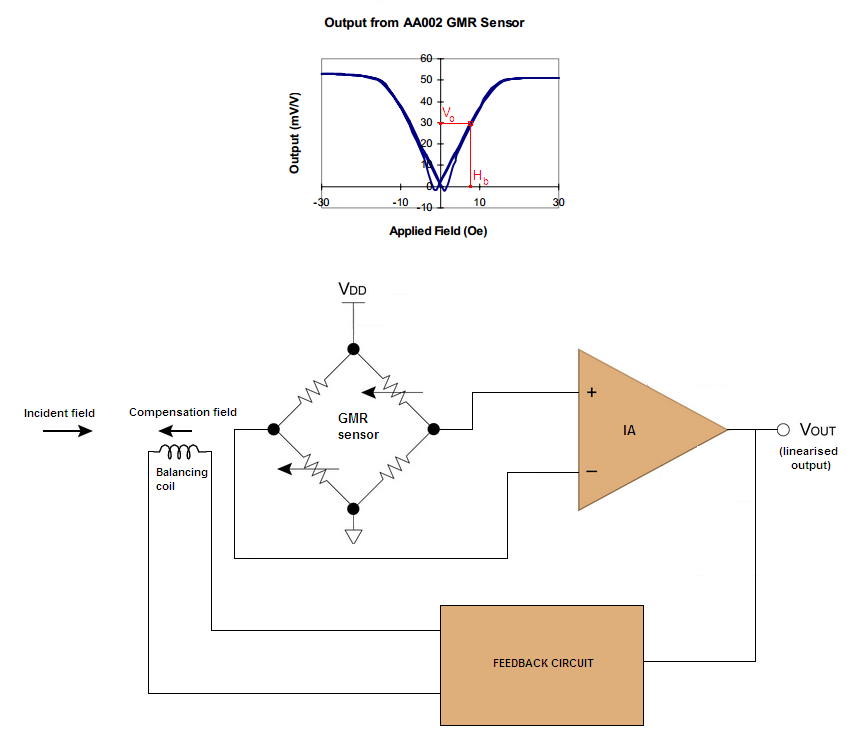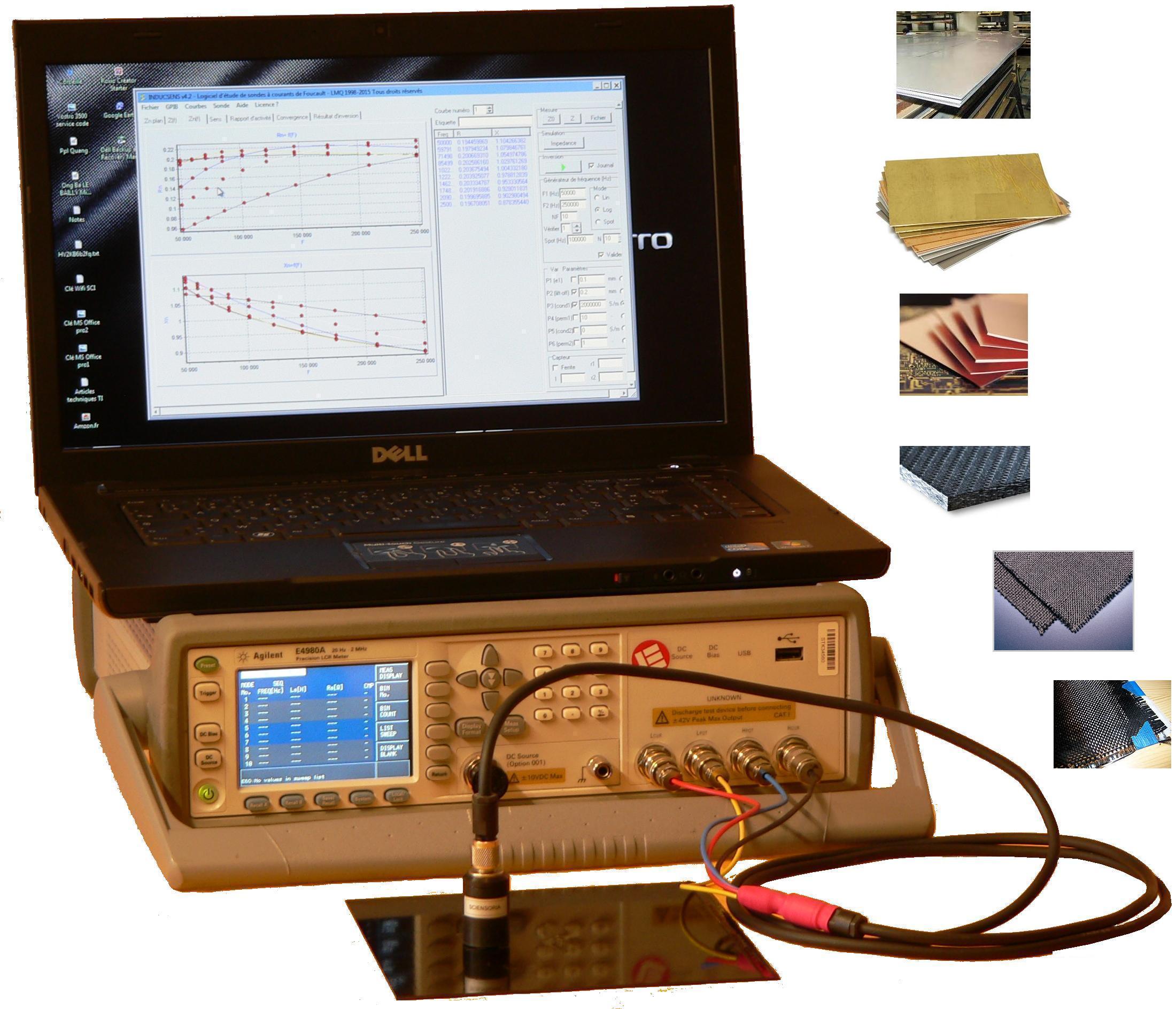|
|
|
|
|
|
|
X/Y encoder interface Toado-2D |
X/Y scanner for probe position tracking |
Pocket USB eddy current instrument |
|
Ruggedized USB & stand-alone eddy current instrument Z-Scope v6.2
|
Desktop USB and stand-alone eddy current instrument Z-Scope v62*Pro
|
Electrical conductivity/Thickness
|
|
|
||
|
Electrical conductivity probe for carbon composite material (CFRP) |
Special and custom coils & probes |
|
|
|
|
|
|
Two channel X/Y incremental encoder interface for the USB port.It has a microprocessor inside and can communicate very easily with a computer under Windows XP, 7, 8, 10 using FTDI chip and driver. Toado-2D is the easiest way to add cartography function to your test system. Documents for download: |
|||||||||||||
|
|
|
|
|
||||||||||||
|
|
|
Scanner system for tracking the position of a probe. Using a Toado-2D USB encoder interface and 2 wire-incremental encoders. The probe is attached to the tips of the encoder wires. The Toado-2D Scanner provides a very flexible way to track probe position and make cartography. Documents for download: |
|||||||||||||
|
|
|
|
|
||||||||||||
|
|
Z-Scope v5 Pocket eddy current instrument. Powered and driven through the USB port of a personal computer. Digital lock-in amplifier inside. High stability, very low offset. Frequency range:
Includes an excitation output and a detection input. Manual variable gain from 1 à 5000. Probe connecter: D-Sub 9 female. Alligator clips included. Delivered with the WinEC software which allows to visualize signals, calibrate probe, realtime measurement. Possible NDT applications: flaw detection, materials sorting, thickness measurement, electrical conductivity measurement, ... Other applications: bridge-type sensors conditionning, circuit analysis,... Documents for download: |
||||||||||||||
|
|
Z-Scope v6 The Z-Scope v6 is a small eddy current instrument. Compared to the pocket model Z-Scope v5, the Z-Scope v6 has 2 multiplexed inputs, higher input bandwidth, digital gain upto 10,000 and can run in stand-alone mode. Thanks to this feature it can be implanted in manufacturing lines. Beside its principal role of eddy current instrument on the frequency range of 3 kHz-100 kHz, it can play the role of a sinus generator on the range of 100 Hz - 200 kHz. It has an analog output which is an image of the in-phase component of the input signal. This output can be used as fast monitoring output and analog feedback in closed-loop operations. The output has a built-in high-pass filter with a corner frequency of 15 Hz. The Z-Scope v6 has 2 input channels with true differential input stages. The gain is set digitally on a very large range: from 1 to 10.000 in 1 , 2 , 5 , 10 , 20 , 50 , 100 , 200 , 500 , 1.000 , 2.000 , 5.000 , 10.000 sequence. The amplifier output is routed to the front panel monitoring BNC "Preamp. out.". Thus the Z-Scope v6 can be used as a high-gain preamplifier. Bridge sensor and LVDT conditionner With its sinusoidal excitation output and its 2-channel input, the Z-Scope v6.2 can be used directly as signal conditionner for a bridge-type sensor, like strain gage sensor. The bridge is AC-excited and the input signal is démodulated by the built-in lock-in. This provides very high dynamic range and low offset. The Z-Scope v6 is also useful for a LVDT-type sensor conditioning. The exciting output is used to excite the primary winding, the synchronous demodulating input is used to measure the LVDT secondary windings output. This application can detect very small displacement under a metallic screen. Giant magneto resistance (GMR) interface The Z -Scope v6 has an unique feature: it is equipped with an interface for giant magnetoresistance sensors (GMR). The interface supplies a bias current to feed the polarisation coil surrounding the sensor. This coil creates a magnetic field which automatically maintains the operating point of the GMR in its linear region, in despite of variations of external fields like earth field or other dc magnetic sources. Without this compensation coil, the GMR output would be distorted and instable because the GMR has a V-shape transfer at the origin (see picture beside) and is very sensitive to external magnetic sources. The "linearized" output is amplified by the second stage of the preamplifier by a gain of 1, 10, 100 or 1,000 and routed to the outside throught the front panel BNC. The dc-component of the signal is eliminated by the built-in highpass filter which is set at 15 Hz. Documentation: |
||||||||||||||
|
|
Z-Scope v6*pro The Z-Scope v6*pro is the industrial version of the Z-Scope v6. It has all analog features of the Z-Scope v6 but it is driven by a powerful embedded computer which can perform highly complex computations tasks and industrial input & output operations. The math operation tasks are carried out in realtime in order to meet industrial requirements. In addition, the Z-Scope v6*pro has a X/Y 24-bits incremental encoders. This allows to get the position information of a probe or that of the target. With 2 incremental encoders, the x-y coordinates of a probe can be determined for plotting a cartography. To enhance industrial interface operations, the Z-Scope v6*pro has 4 opto-coupled inputs and 4 opto-coupled outputs which accept signal levels in the range 3,5V-24V. The isolated voltage is several kV. OEM delivery mode The Z-Scope v6*pro can be delivered in OEM mode: in this case the user can access to the program source code and can customize it. The onboard Intel x86-compatible microprocessor is very powerful and accepts high level programming languages as Pascal, C or C++. The embedded program can be entirely remade by the user or partially modified by adding new routines to existing ones. Documentation |
||||||||||||||
|
|
|
Conducsens/TK-SensTM This non destructive measurement system includes an eddy current probe connected to an impedance analyzer. A PC-software analyzes and converts the acquired impedance to thickness, lift-off, electrical conductivity, magnetic permeability of the tested material. The system can measure the conductivity of thin sheets, ferrous metals, low conductive material as carbon composite or graphite. One can use it to measure thickness of metal deposit on isulated substrate. Several impedance analyzers models are compatible with the Conducsens/TK-SensTM system. On the picture beside: an E4980A from Agilent. Compatible impedance analyzer list: *Compatible models but requiring a customisation of the software We offser a programming service for interfacing other models which are not in the above list with the measurement software. Documents for download:
|
|||||||||||||
|
|
UCAR2013 probe Probe for the measurement of electrical conductivity of carbon composite material (CFRP). Carbon-fiber-reinforced polymers are composite materials. In this case the composite consists of two parts: a matrix and a reinforcement. In CFRP the reinforcement is carbon fiber, which provides the strength. The matrix is usually a polymer resin, such as epoxy, to bind the reinforcements together. Because CFRP consists of two distinct elements, the material properties depend on these two elements. Source: http://en.wikipedia.org/wiki/Carbon-fiber-reinforced_polymer The UCAR2013 probe allows to measure the electrical conductivity carbon composite material. It takes into account the thickness of the material: the measured conductivity is thickness free. |
||||||||||||||
|
|
BLARROW A & D probes Multi-functions probes for flaw detection, conductivity sorting, metallic objects detection. They are composed of a tiny detector (diameter # 1mm) and a separated excitation circuit. The active face is in low wear zirconium |
||||||||||||||
|
|
Custom probes & coils Sciensoria proposes to design and realize special and custom probes & electromagnetic coils: - special probes for a new application. They are often realized a part of a feasibility study. - coils and probes on specifications. Our probes have excellent characteristics: small, great number of turns, high quality coefficient Q, low parasitic capacitance. Please specify the main parameters of the coils and probes you want:
Please send your request to info@sciensoria.fr You can use this online form to send us the requestl We will do our best to reply you as soon as possible. |
||||||||||||||
